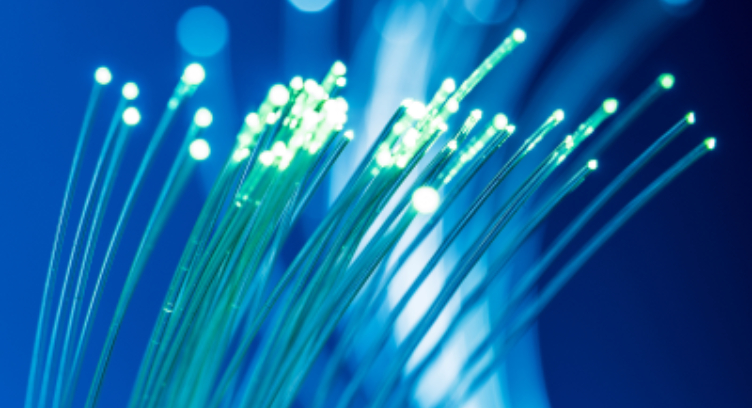Equinix, the world's digital infrastructure company®, today announced an expanded relationship with Southern Cross Cables Limited (Southern Cross) to provide a key U.S.-based interconnectivity access point for the Southern Cross NEXT (SX NEXT) submarine cable system. SX NEXT will leverage Equinix’s next-generation cable landing station (CLS) architecture, enabling rapid provisioning and cost savings for the cable network provider.
Today, 99% of intercontinental telecommunications traffic is transmitted via submarine fiber-optic cables, with less than 1% of the remaining traffic carried through satellite systems[1]. As demand continues to increase for a low-latency digital economy, Equinix and Southern Cross are committed to maintaining low-carbon footprints of subsea cables by designing for sustainability and embracing shared metrics, as recommended by Sustainability Subsea Networks.
The SX NEXT cable offers the lowest latency path from Australia and New Zealand to Los Angeles in the U.S., connecting into Equinix’s LA4 Los Angeles International Business Exchange® (IBX®) data center. Southern Cross has had a long-term relationship with Equinix due to its global presence, expertise in providing state-of-the-art subsea infrastructure, and its access to dense, rich ecosystems of networks, clouds, financial and IT service providers. The SX NEXT cable enhances network performance across industries in the region and boosts the aggregate capacity of Southern Cross’ existing Trans-Pacific ecosystem by approximately 500%. Southern Cross also utilizes Platform Equinix® to provide critical on-ramps to the Southern Cross network ecosystem at SY1 and SY5 Sydney data centers, as well as SV1and SV8 in Silicon Valley, and LA1 in Los Angeles.
With the release of 400GbE (Layer 1 and 2) capability on the Southern Cross network earlier this year, customers can now take advantage of the lowest latency, secure 400G data center inter-connections between key Equinix facilities in Sydney, Australia and the U.S. West Coast.
Highlights / Key Facts:
The subsea cable momentum has continued worldwide as digital transformation remains a global priority for enterprises. Equinix's footprint of 250 IBX and xScale® data centers in 71 global markets across 32 countries provides the metro edge points of presence (PoPs) required to deliver low-latency interconnection for transporting increasing volumes of internet traffic. At Equinix, subsea cable owners/operators can deploy cable landing stations that open gateways between continents and interconnect businesses around the world.
Equinix has won 50 subsea cable projects since entering the business in 2015. More than 50 Equinix metros are CLS enabled, meaning that Equinix’s data centers are close enough to the coast to be able to support a CLS deployment.
The need for additional capacity between Australia and the U.S. is driven by increased demand for cloud services, content and digital media, and e-commerce capabilities, a sign of the growing maturity of the Australian digital economy. Content providers are the primary trans-Pacific bandwidth consumers, accounting for almost 78% of bandwidth in 2022[2]. Their increasing demand only began in 2015; prior to that, internet backbone providers held the largest share of the market. Since then, the demand gap between the two has continued to widen as content providers have maintained their rapid growth over the years.
The trans-Pacific demand has grown at a compound annual growth rate (CAGR) of 41% over the past five years—significantly more than the 26% CAGR of internet backbone providers. In 2021, the Australian Government announced that it is investing an additional A$1.2 billion to grow Australia’s digital economy by 2030, including investments in infrastructure, skills, cybersecurity, regulations and digital trade.
According to the Global Interconnection Index (GXI) 2023, an annual market study published by Equinix, global interconnection bandwidth—the measure of private connectivity for the transfer of data between organizations—is forecast to reach 27,762+ terabits per second (Tbps) by 2025, representing a five-year CAGR of 40%, equivalent to 110 zettabytes of data exchanged annually, or enough bandwidth to support over 50 million autonomous cars each exchanging over 2,000 terabytes (TB) of data per year. This forecasted growth shows how organizations are rethinking their business to implement future-proof infrastructure on technology platforms.
Pacific route. Demand experienced more than a threefold increase from 2018 to 2022, with the route utilizing 255 Tbps of capacity last year alone. With the ever-increasing demand for data transmission and the burgeoning digital economies of the Asia-Pacific region and North America, subsea cables have become critical infrastructure. These undersea networks are designed to handle immense data volumes at lightning-fast speeds, facilitating seamless international communication and powering the growth of industries like cloud computing, e-commerce, and digital entertainment. As technology advances and new players enter the field, the trans-Pacific subsea cable landscape continues to evolve, promising even greater connectivity and opportunities for innovation in the years to come.”
Craige Sloots, Director, Marketing & Strategy, Southern Cross
We place high value on working with an industry leader that not only has a significant global presence but understands the intricacies of business in the Pacific region. Equinix’s deep industry knowledge and robust digital ecosystems—where businesses come together to exchange data, unlock collaboration opportunities, and form new markets—enables us to provide innovative technology and network solutions to minimize latency and improve performance for our customers. Trans-Pacific subsea connectivity will continue to be a key enabler in the region for many years to come, and we’re excited about this next phase of interconnection through our work with Equinix.
Jim Poole, Vice President, Business Development, Equinix
As bandwidth reaches unprecedented levels, the volume of subsea cable construction has reached its highest point in the 165-year history of this medium. Major projects are bringing new capacity into emerging and high-growth markets such as Africa, Latin America, the Middle East and Southeast Asia. And in well-established subsea cable corridors—including the Pacific—there’s new construction to keep up with the growing demand. By supplementing existing trans-Pacific routes, the Southern Cross NEXT cable provides seamless and accelerated interconnection across Platform Equinix, with an opportunity to help boost the digital economy in those regions.






















